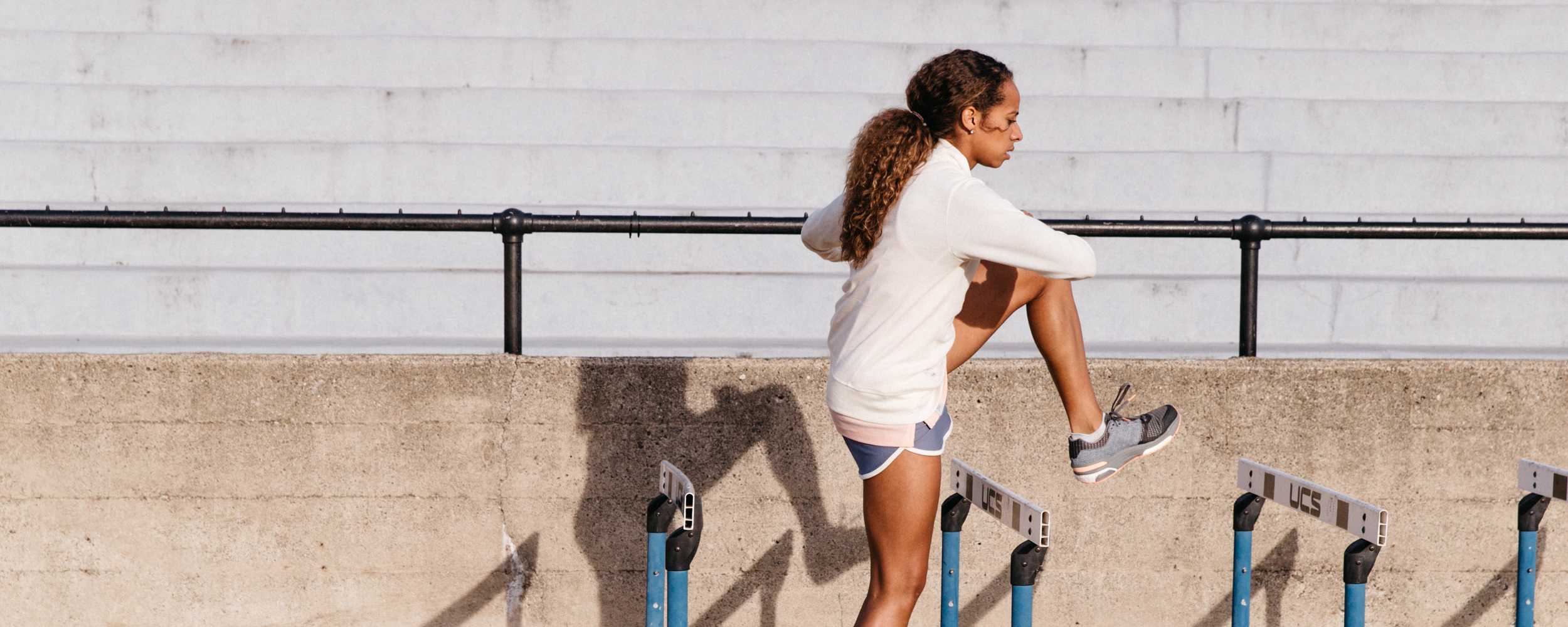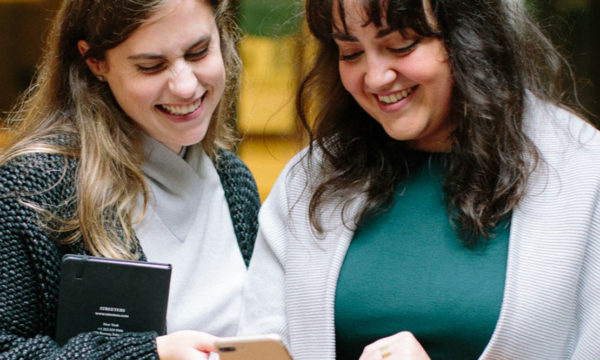Built For Speed: Tracksmith Is the Company for Serious Runners
December 09, 2016 | Filed in: Q&A
At MM, we believe that the best businesses are often started by the very people who need them most (in our case, professional women), and we applaud other companies who walk the walk—or, in Tracksmith‘s case, run the run. Founded in 2014 by Matt Taylor, a New England native who ran competitively at Yale, the brand caters to serious runners—you know, the addicted types who rise at dawn to get in a few miles before the workday (we’ve got a bunch in our office, including MM co-founders Sarah and Narie). Here, Matt talks about combining runs and meetings, why no runner needs to look like a Power Ranger, and why he looks forward to turning 40.
I’VE BEEN A RUNNER my entire life, as long as I can remember. I ran competitively all through high school, college, and a little post-collegiately. Even as life started to get in the way, I continued to make running a priority—it’s a part of my self-identity. A lot of us are busy, and you maybe have time for two to three things: your job, your family, and maybe one hobby. For me, running is that third thing that just makes up who I am.
ANY ATHLETE FACES an inevitable decline at some point, when age or other factors start to affect performance, and that can create a big void in your life. I certainly experienced it, and the key was finding another outlet for that competitive drive. For me, becoming an entrepreneur was a great way to channel that energy.
I NOW HAVE TWO YOUNG KIDS, so I haven’t been racing as much as I would like to. However, once you turn 40, you can compete in the Masters category, so all of a sudden you’re competing against other people your own age again. I’m kind of looking forward to that: a rejuvenation of my racing once I turn 40.
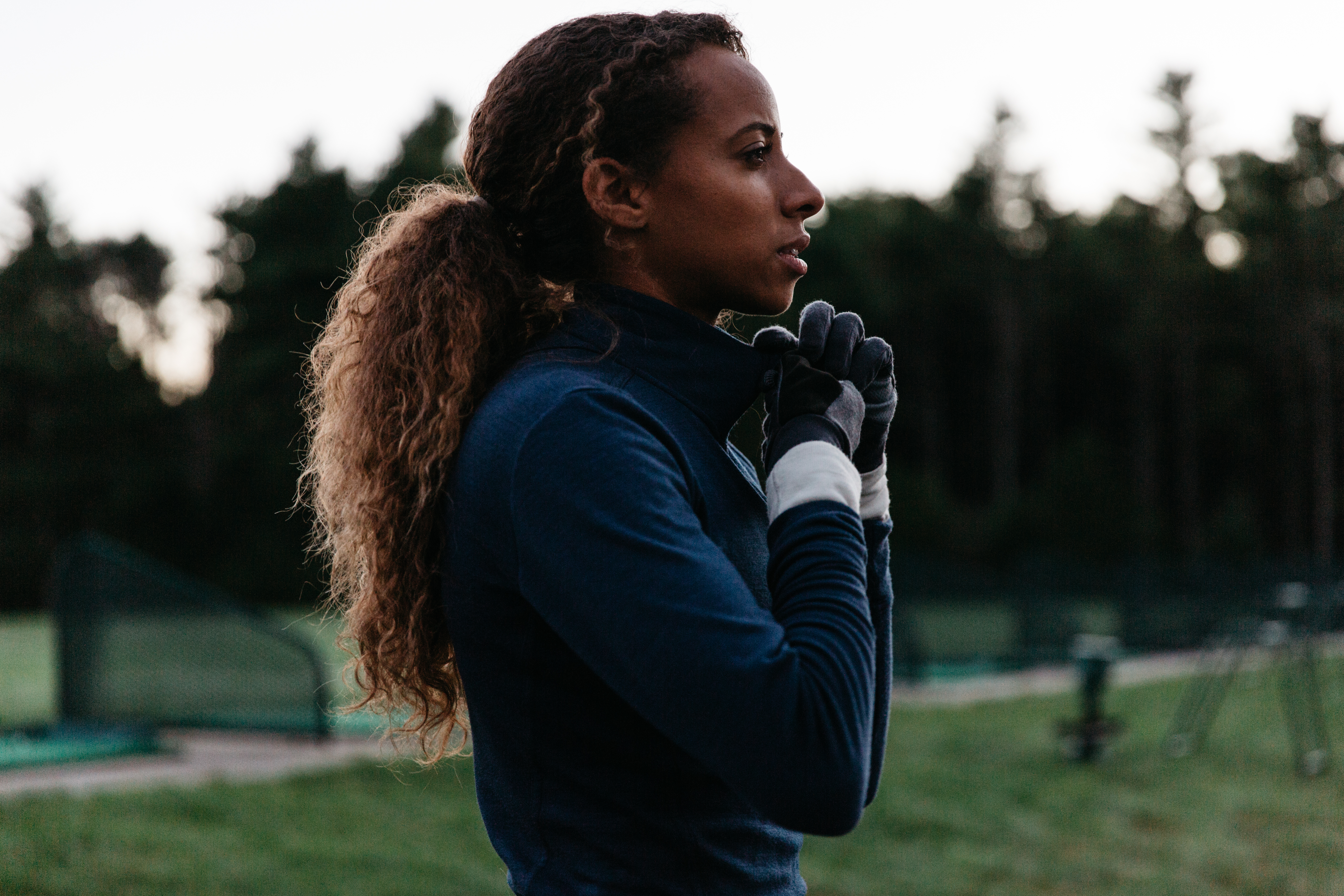
Runner Lea Wallace in Tracksmith, photographed by Emily Maye.
RUNNING IS UNIQUE in that participation among adults is about a 50/50 gender split—many of the other sports that we look to as peers, like cycling, are dominated by men. And outside of a sports bra, the needs of male and female runners are pretty basic and similar. There’s a wonderful egalitarian sense about it.
AFTER COLLEGE, my first job was at IMT, which is a big sports marketing and management firm. As my career progressed, I started concentrating more on running—it was the area where I thought I could make the most impact. I then worked at Puma as the head of global marketing for the running and training categories. I knew that I needed that big company experience to round out my skill set before going out on my own. I was looking at everything from apparel and footwear to media and events, even travel. I put my thoughts and ideas together, and when I felt the time was right to start Tracksmith, I made that leap.
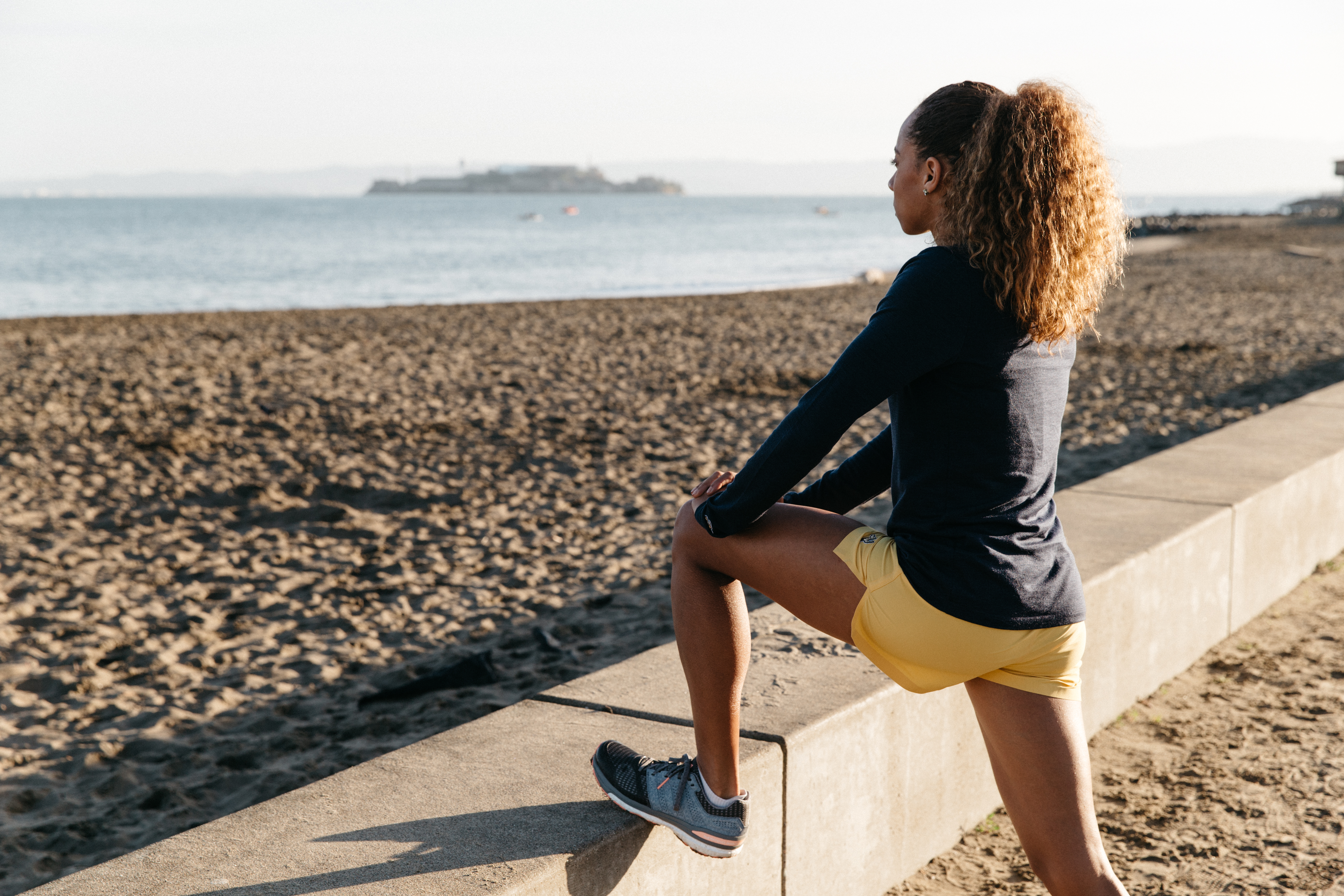
Lea in California, photographed by Emily Maye.
BEFORE WE LAUNCHED, we did an interesting experiment: We bought some running products from the market and we put them in people’s closets with their normal clothes. And they looked nothing like anything they would normally wear. Why do you have to look like a Power Ranger when you go out for a run? For women, could it be any more pink and purple and lime green? I love pink, for men and for women, but many brands took the “pink it and shrink it” model to a new level: They took the men’s product, made it smaller and in pink, and that was the women’s collection. At Tracksmith, we aim to make things that are more similar to the rest of our wardrobe. Navy blue is our core color, and it’s a classic color for men and for women. We have a much more understated aesthetic, and our focus is on the function.
WE TEST AND PHOTOGRAPH all of our products on actual competitive runners, and for each collection, we take a group of athletes and set up a temporary training camp in Vermont or Maine or California—wherever the weather will work in our favor. We also work with an incredible photographer named Emily Maye, who comes along and documents the whole experience for a couple of days. The athletes go about their training as usual—whether it’s for a marathon or a track race—and we capture the interesting moments as they happen.
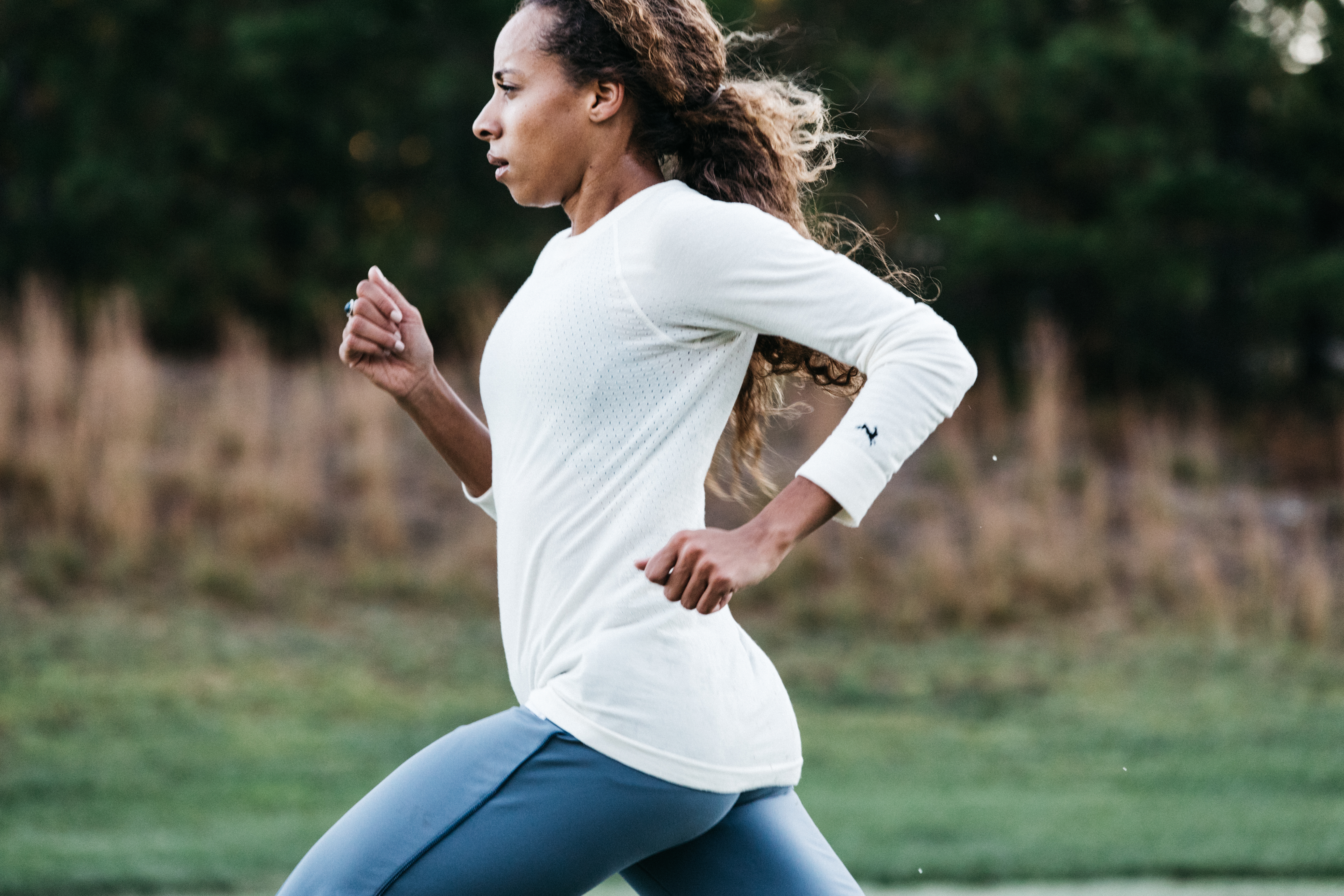
Lea training, photographed by Emily Maye.
FOR OUR LATEST COLLECTION, we worked with the runner Lea Wallace, who holds the school record at Sacramento State in several events. She continued to run after college and got very close to making the Olympic team. Her story is pretty incredible—both of her parents passed away when she was young, and she was taken in by a community in Napa Valley. She credits the sport for keeping her focused on life moving forward, and she currently mentors kids who’ve had experiences like hers.
WE INCORPORATE RUNNING into our office wherever possible. Very early on, we made it a habit to combine running with important conversations, rather than sitting on a couch and talking. There’s a lot of science out there about how creative people are after exercising. It’s also just an efficient use of our time.
RUNNING HAS AN INCREDIBLE CULTURE. It’s one of the oldest sports in the world, and the most accessible, because so little is required to do it. On one end of the spectrum, you have professionals, and on the other end you have participants—but in the middle is this vastly underserved group of people, millions of them. Other brands are so focused on either end of that spectrum—they’re funneling a ton of money into elite athletes, or they’re just about more general health and wellness. We’re firmly focused on this group in the middle that’s made up of very serious runners. If you take the time in your life to run, then that means it’s part of who you are, and those are the people we want to celebrate.





